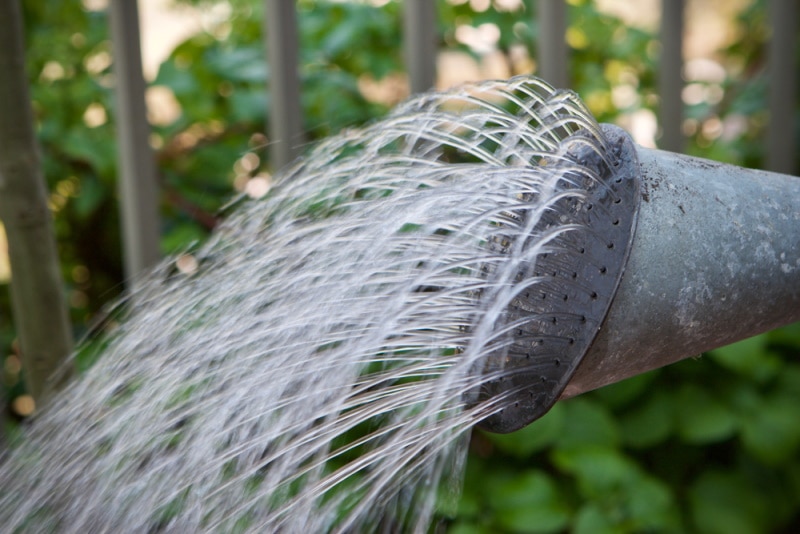How to Make Potting Soil for Citrus Trees (7 Easy Steps)
-
Chris Dinesen Rogers
- Last updated:

Many say that paintings and plants make a home. That latter rings true with many people, with roughly 66% of American households having at least one in their homes. People often cite aesthetic reasons for bringing them into their homes, while some grow them to have something alive around, or for cooking. The three most popular houseplants are: Split-Leaf Philodendron (Monstera deliciosa), Fiddle Leaf Fig (Ficus lyrata), and Chinese Money Plant (Pilea peperomioides).
While they aren’t on the top of the list, you can grow citrus trees too. They may not produce fruit, but you can give them the best start with the right soil. Nevertheless, you can enjoy their beauty, even if you don’t get a squeeze of lemon from them for your morning tea. Your success depends on the soil you provide. Our guide will tell you everything you need to know to give them what they need to thrive.
Before You Start
Citrus trees are native to Near Oceania and tropical regions within Asia. Citrus trees grow in USDA Plant Hardiness Zones 8–111. While you probably won’t be growing full-sized citrus trees, it’s still helpful to understand their soil needs, to choose or prepare the right one for your dwarf plants. Water management and soil chemistry are the keys to raising them successfully.
According to the University of Florida IFAS Extension2, citrus trees growing in the state are in soils composed of marine sediments. Most contain over 94% sand with varying amounts of silt, clay, and organic matter. Moreover, the soil is well-draining, with consequently little nutrient or water-holding capacity. Organic matter compensates for the latter conditions.
Citrus trees fare best in soils with a pH between 6.0–6.5. Liming ensures the conditions remain stable for optimal growth of the trees and beneficial bacteria. It also helps the plants get enough phosphorus. Soil testing can determine the amount of liming materials you need to apply.
It’s worth mentioning that citrus plants are toxic to dogs and cats. Make sure to keep them out of reach of your pets, particularly the fruits with their high concentration of citric acid.

Materials
Regular potting soil won’t provide the optimal conditions to grow citrus trees. Instead, you should use a blend of materials to meet the plants’ needs. The supplies you will need include:
- Vermiculite or perlite
- Sphagnum peat moss
- Potting soil
- Measuring cup or scoop
- Bucket
- Pot
- Rocks (optional)
- Bleach (optional)
- Soil tester
The 7 Steps to Make Potting Soil for Citrus Trees
1. Prepare the Pot for Your Citrus Tree.

If you bought a new pot for your plant, rinse it out thoroughly before you use it. If you’re reusing one, rinse it with a mild bleach solution: nine parts water to one part bleach. That will kill any pathogens that might be present in the old soil or inside the container. Add some rocks to the bottom if drainage holes aren’t present.
2. Mix the Soil Materials.
Your soil mixture will consist of equal parts of vermiculite, sphagnum peat moss, and potting soil. It’ll provide an excellent base for your citrus tree to grow and thrive. Stir it thoroughly in the bucket to ensure it’s evenly mixed. These materials replicate the well-draining characteristic of sand while providing a lightweight and less dense mix for roots to penetrate.
3. Test the Soil.

Test the soil to make sure that the pH is within the desirable range. If it’s too high, add some more peat moss and stir it thoroughly. Repeat as necessary. PH is the critical factor. We suggest using soil materials with slow-release fertilizers to maintain a stable growing environment for your citrus tree.
4. Transfer the Potting Mixture to Your Pot.
Once you have the right soil chemistry, transfer the mixture from the bucket to the pot. The vermiculite and sphagnum peat moss are lightweight materials, which may make it difficult to pour into the container. You may find it easier to scoop the soil into the pot. We also recommend doing this task outside or on the floor, covered with newspapers or a drop cloth.
Step 5. Give the Soil a Good Soaking Before Planting Your Citrus Tree.

The lightweight materials will make soaking the soil mix take longer. We suggest stopping as it fills, and then letting it soak down several times to wet it thoroughly. Citrus trees need moist but not soggy soil to remain healthy.
6. Check the pH of the Soil Occasionally.
The sphagnum moss will break down over time. Therefore, you may find it necessary to add more of the mix to keep the soil level at the top of the pot. You should also test the pH occasionally. If you want to fertilize your plant, only do it when it’s actively growing through the spring and summer. Make sure to use a product formulated for acid-loving plants.
7. Water Your Citrus Tree Consistently.

Maintaining the optimal growing environment means ensuring your citrus tree is well watered. Remember that the soil mix you’ve prepared is fast draining. These plants show water stress after only a day or two of dry conditions. However, don’t allow your plant to sit in water to avoid root rot and other diseases.
Final Thoughts
Citrus trees are a beautiful addition to your home, with their gorgeous foliage and tasty fruit. Even if you can’t plant one in your backyard, you can still enjoy them indoors. It’s essential that you place it in a warm, sunny room. Varieties you can try include Meyer lemon and clementine. If you’re lucky, you may even get to taste the fruits of your labor.
Featured Image Credit: Jumpstory
Contents

